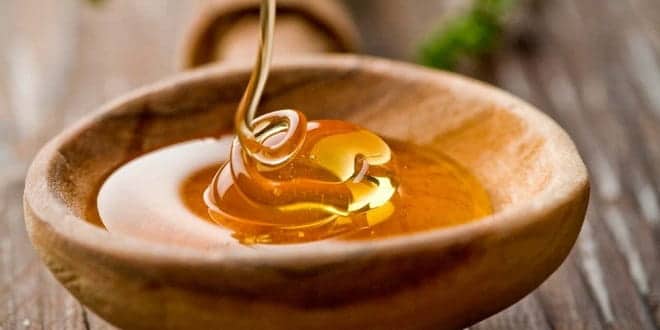Honey is essentially a highly concentrated water solution of two sugars, dextrose and levulose, with small amounts of at least 22 other more complex sugars. Many other substances also occur in honey, but the sugars are by far the major components. The principal physical characteristics and behavior of honey are due to its sugars, but the minor constituents – such as flavoring materials, pigments, acids, and minerals – are largely responsible for the differences among individual honey types.
Honey, as it is found in the hive, is a truly remarkable material, elaborated by bees with floral nectar, and less often with honeydew. Nectar is a thin, easily spoiled sweet liquid that is changed (“ripened”) by the honey bee to a stable, high-density, high-energy food. The earlier U.S. Food and Drug Act defined honey as “the nectar and saccharine exudation of plants, gathered, modified, and stored in the comb by honey bees (Apis mellifera and A. dorsata); is levorotatory; contains not more than 25% water, not more than 0.25% ash, and not more than 8% sucrose.” The limits established in this definition were largely based on a survey published in 1908. Today, this definition has an advisory status only, but is not totally correct, as it allows too high a content of water and sucrose, is too low in ash, and makes no mention of honeydew. Colors of honey form a continuous range from very pale yellow through ambers to a darkish red amber to nearly black. The variations are almost entirely due to the plant source of the honey, although climate may modify the color somewhat through the darkening action of heat.
The flavor and aroma of honey vary even more than the color. Although there seems to be a characteristic “honey flavor,” almost an infinite number of aroma and flavor variations can exist. As with color, the variations appear to be governed by the floral source. In general, light-colored honey is mild in flavor and a darker honey has a more pronounced flavor. Exceptions to the rule sometimes endow a light honey with very definite specific flavors. Since flavor and aroma judgments are personal, individual preference will vary, but with the tremendous variety available, everyone should be able to find a favorite honey.
Composition of Honey
By far, the largest portion of the dry matter in honey consists of the sugars. This very concentrated solution of several sugars results in the characteristic physical properties of honey – high viscosity, “stickiness,” high density, granulation tendencies, tendency to absorb moisture from the air, and immunity from some types of spoilage. Because of its unique character and its considerable difference from other sweeteners, chemists have long been interested in its composition and food technologists sometimes have been frustrated in attempts to include honey in prepared food formulas or products. Limitations of methods available to earlier researchers made their results only approximate in regard to the true sugar composition of honey. Although recent research has greatly improved analytical procedures for sugars,
…

